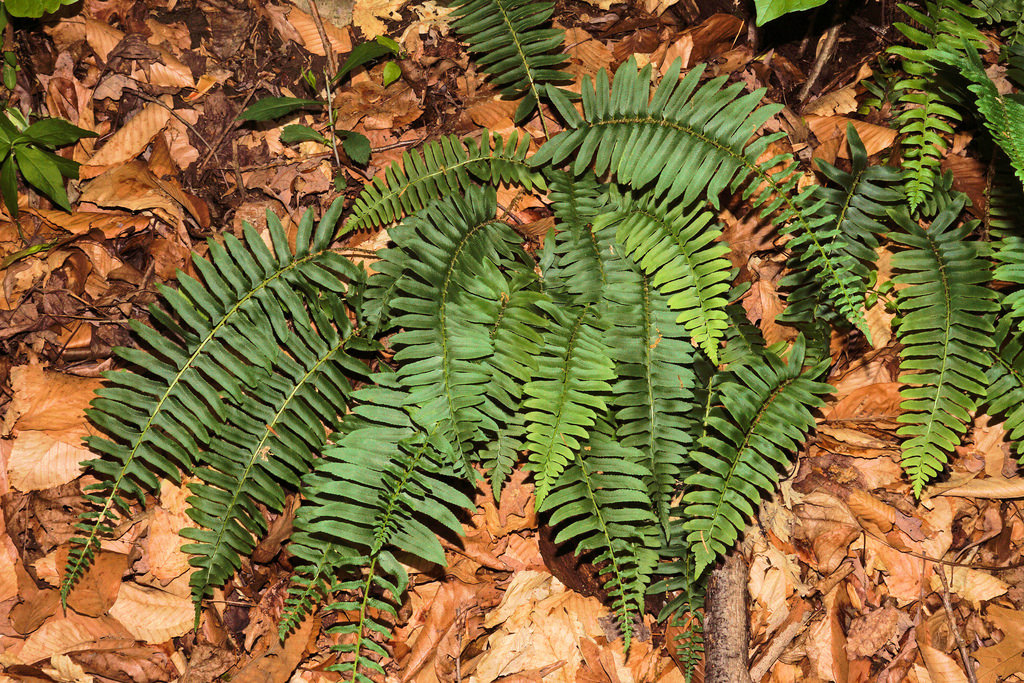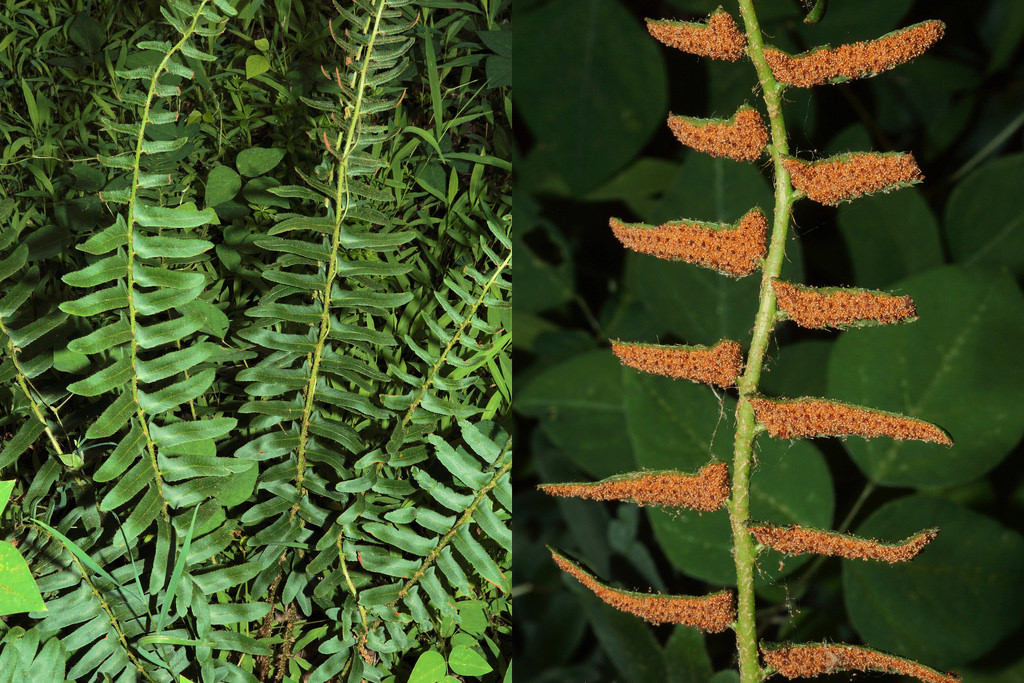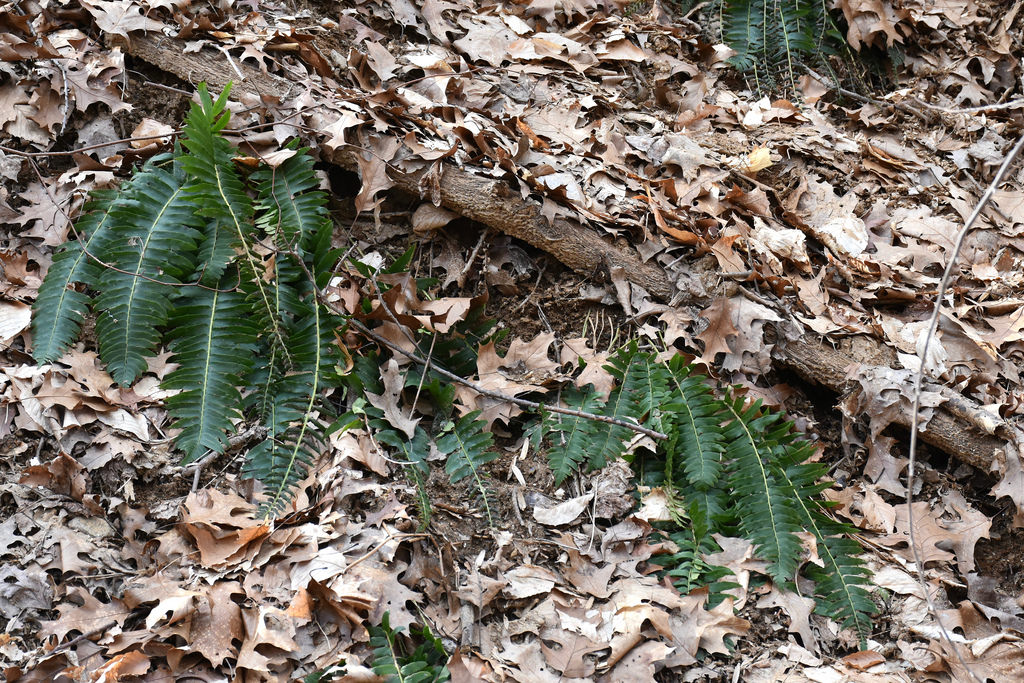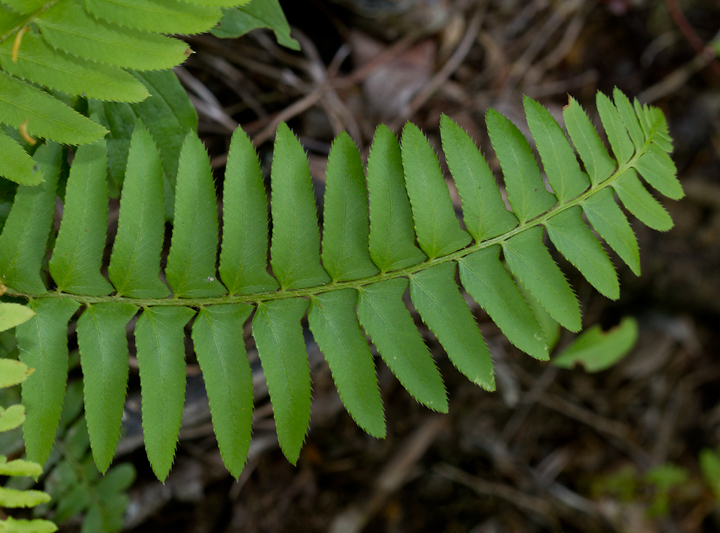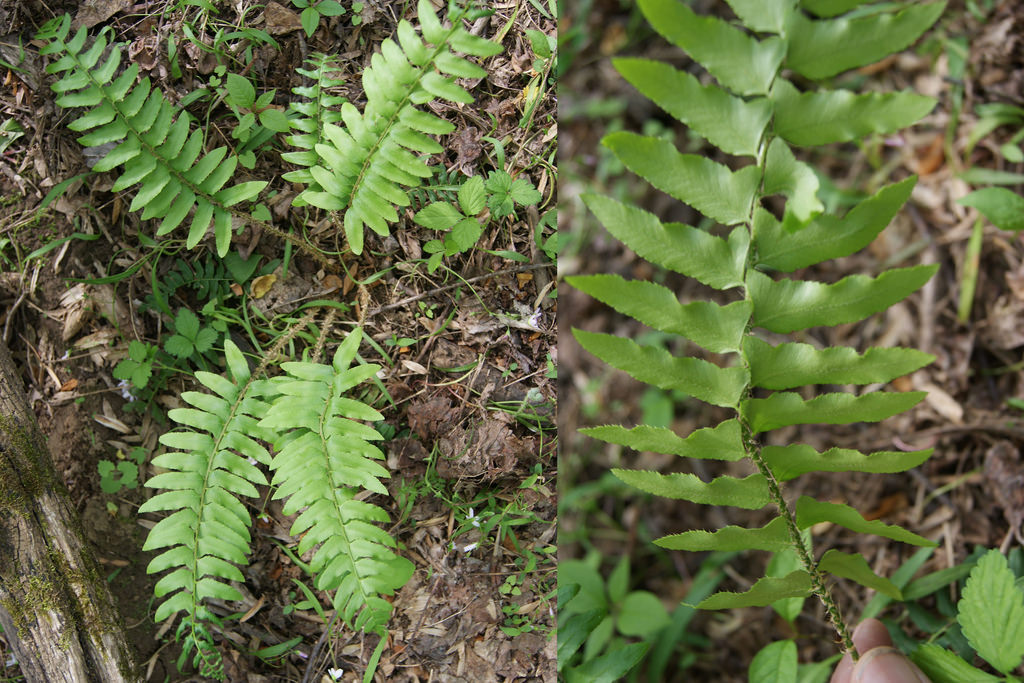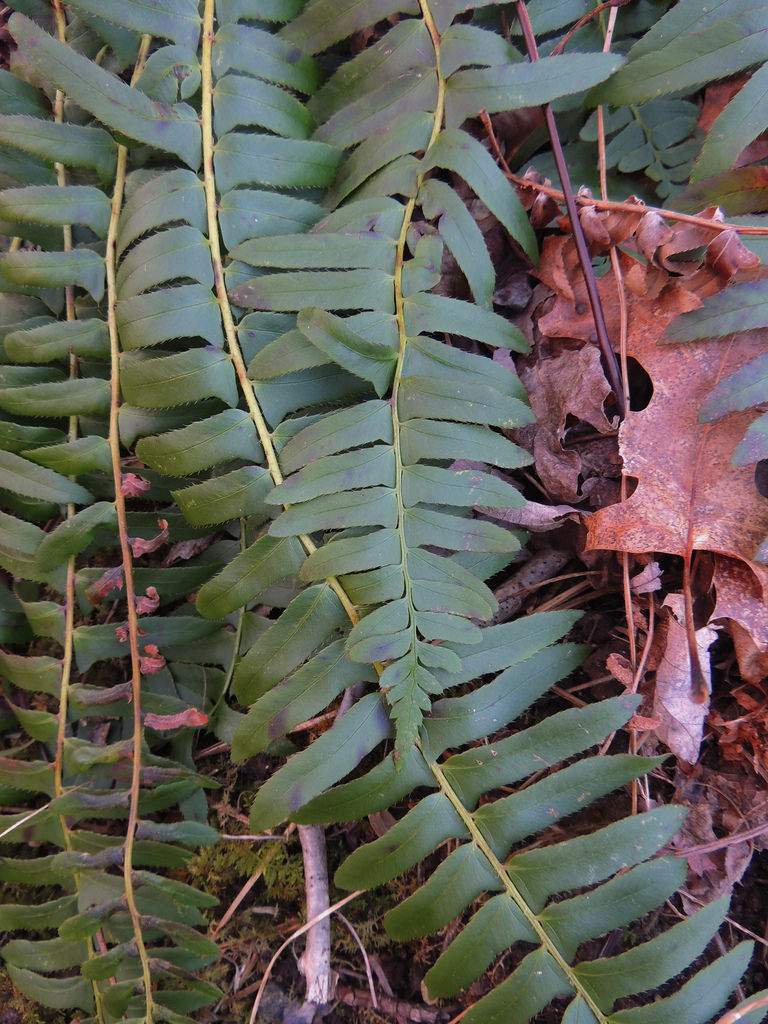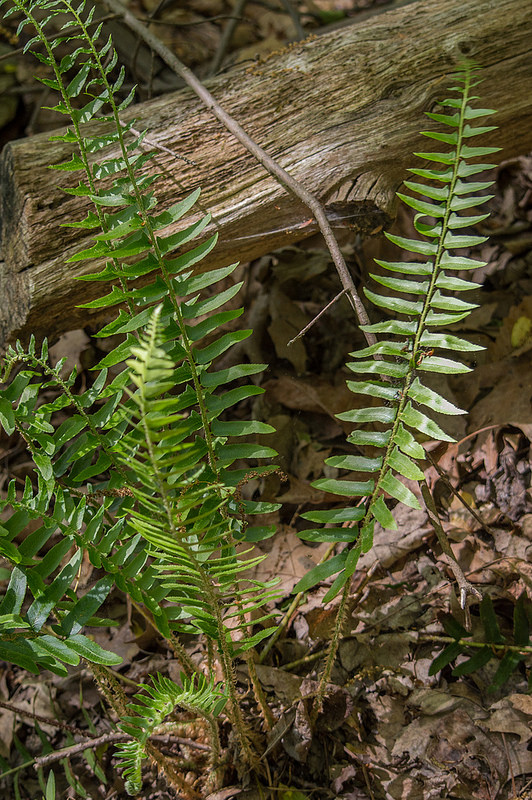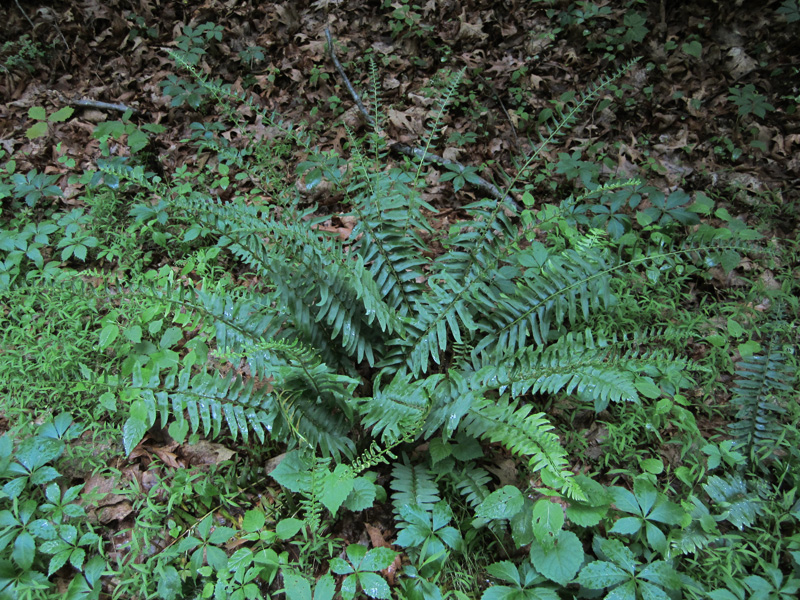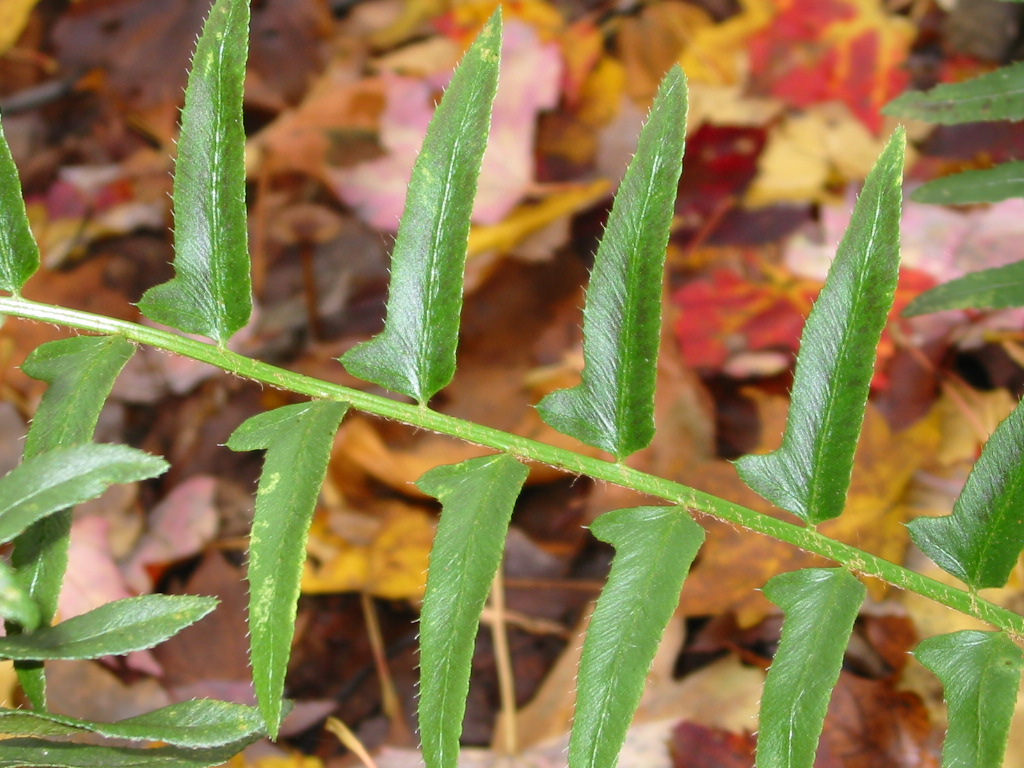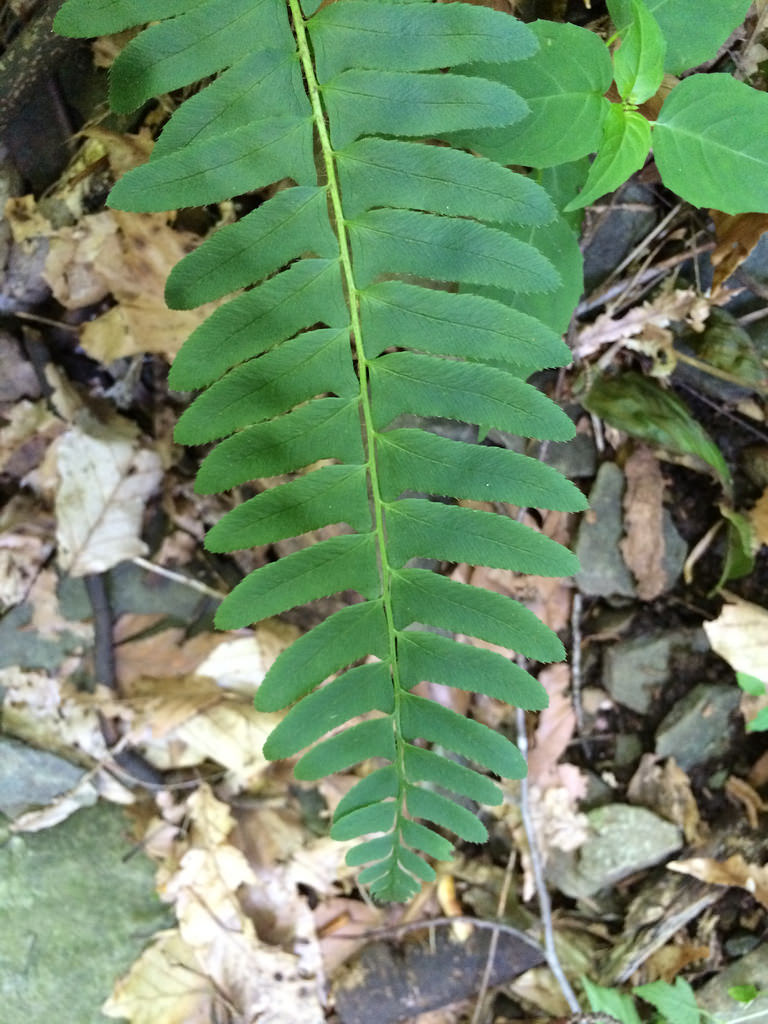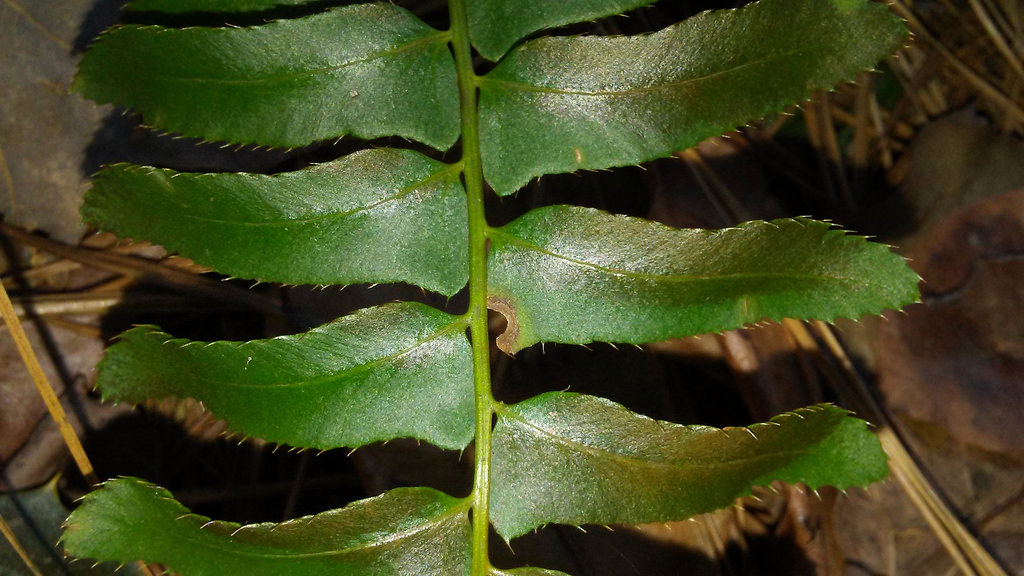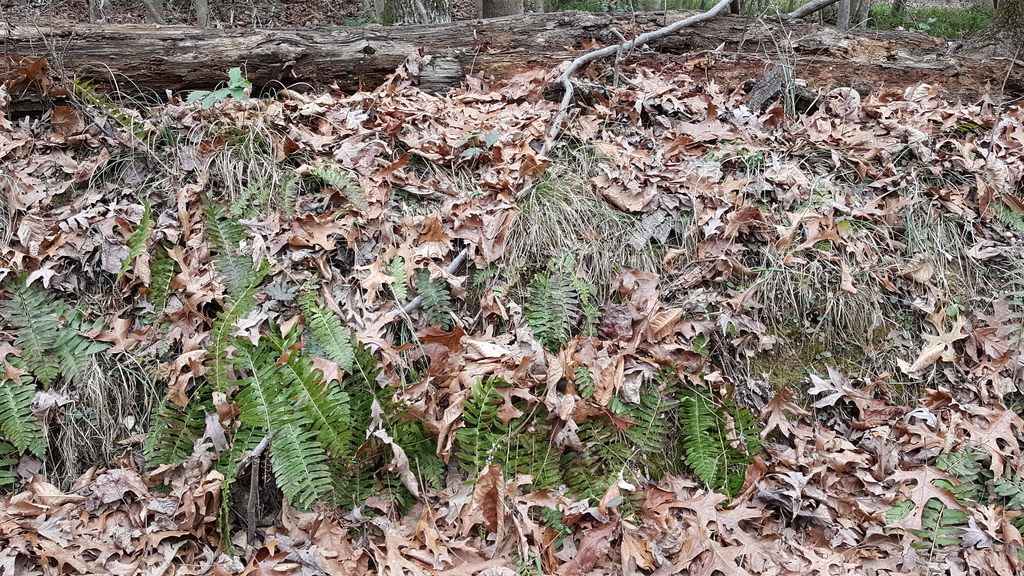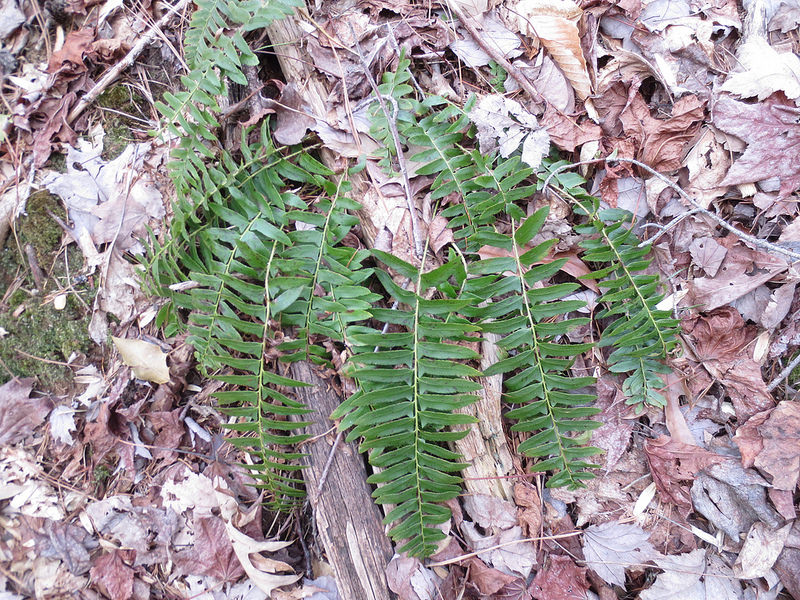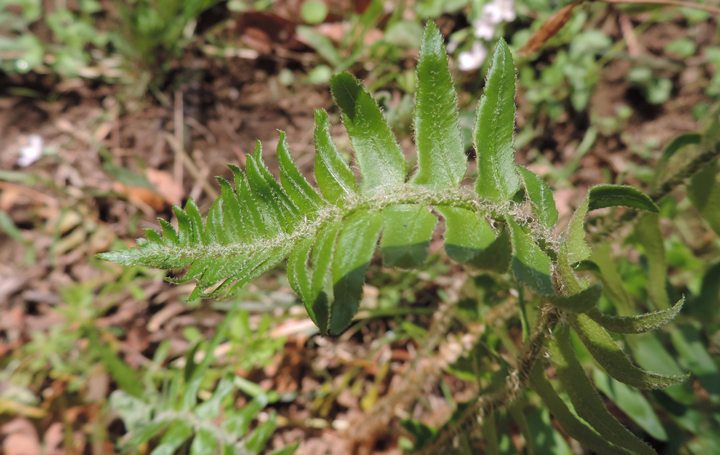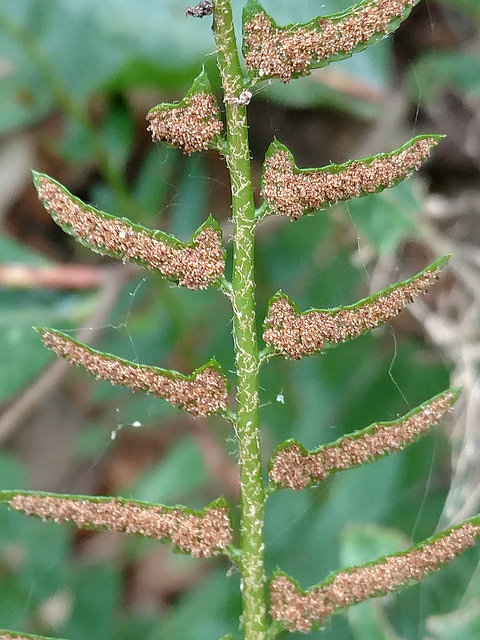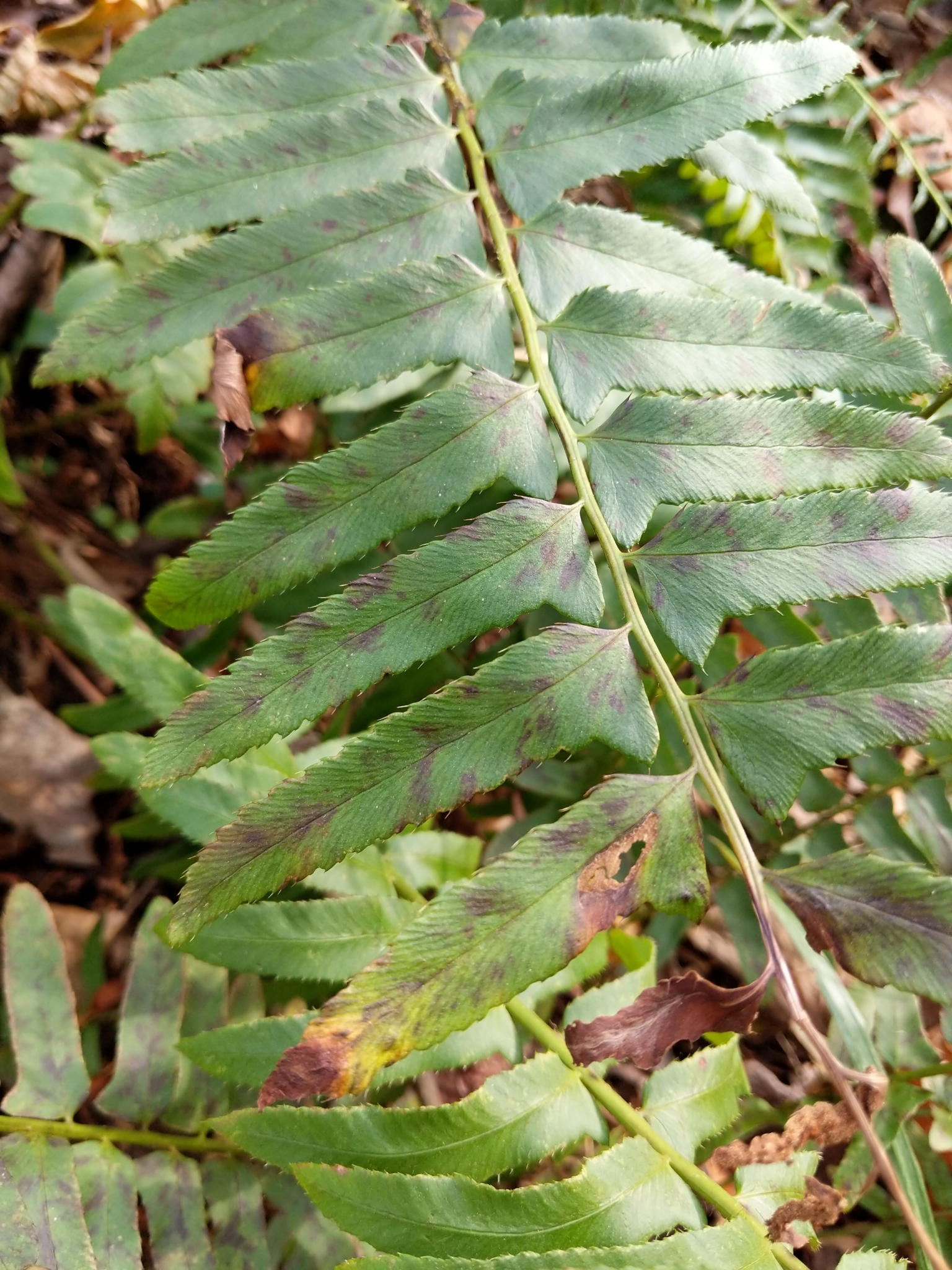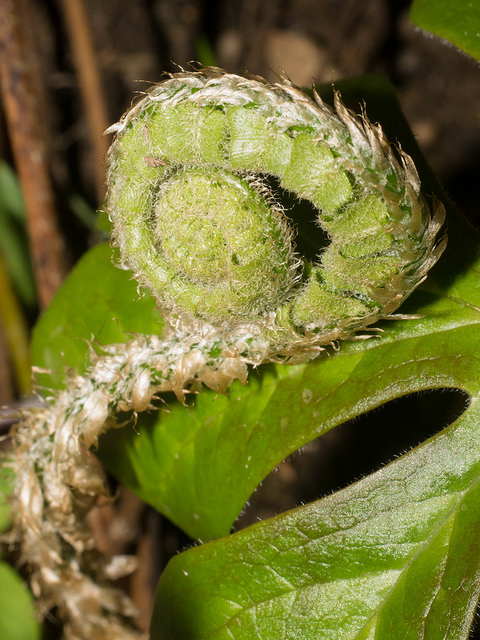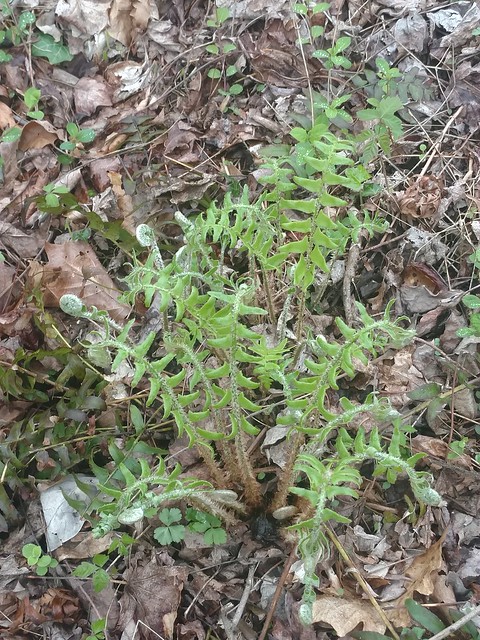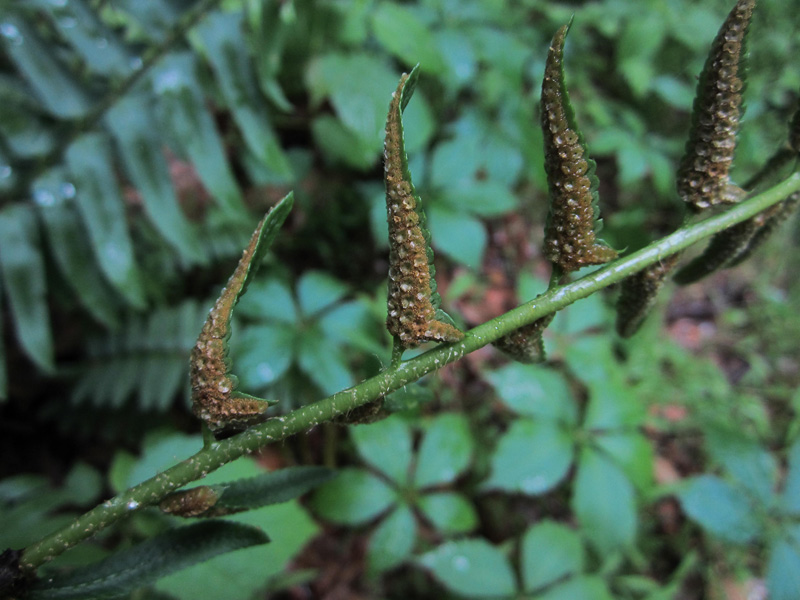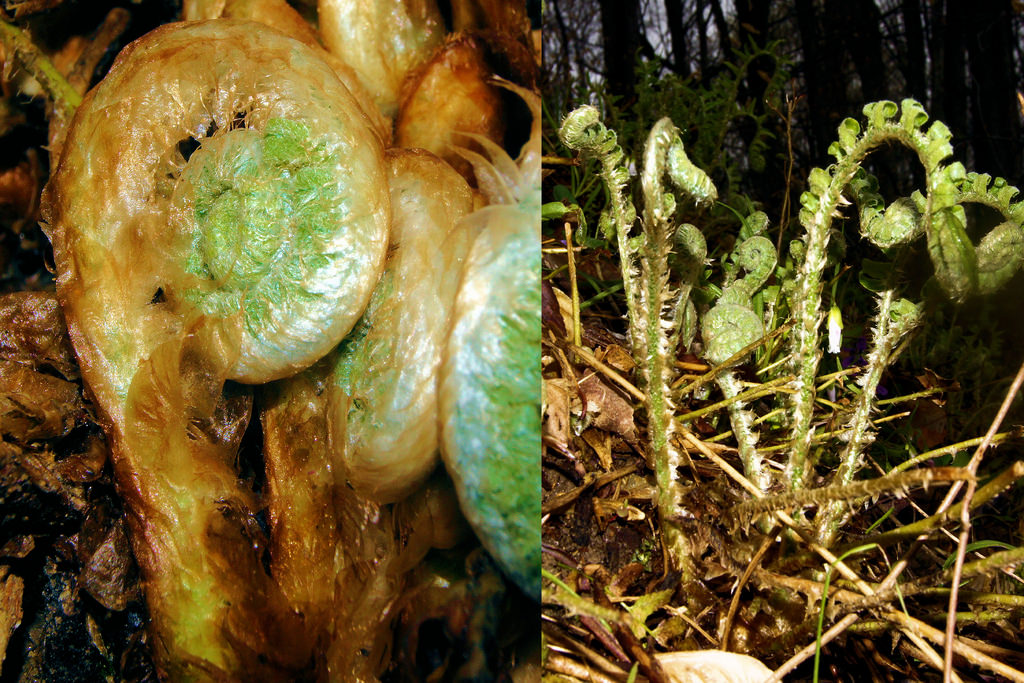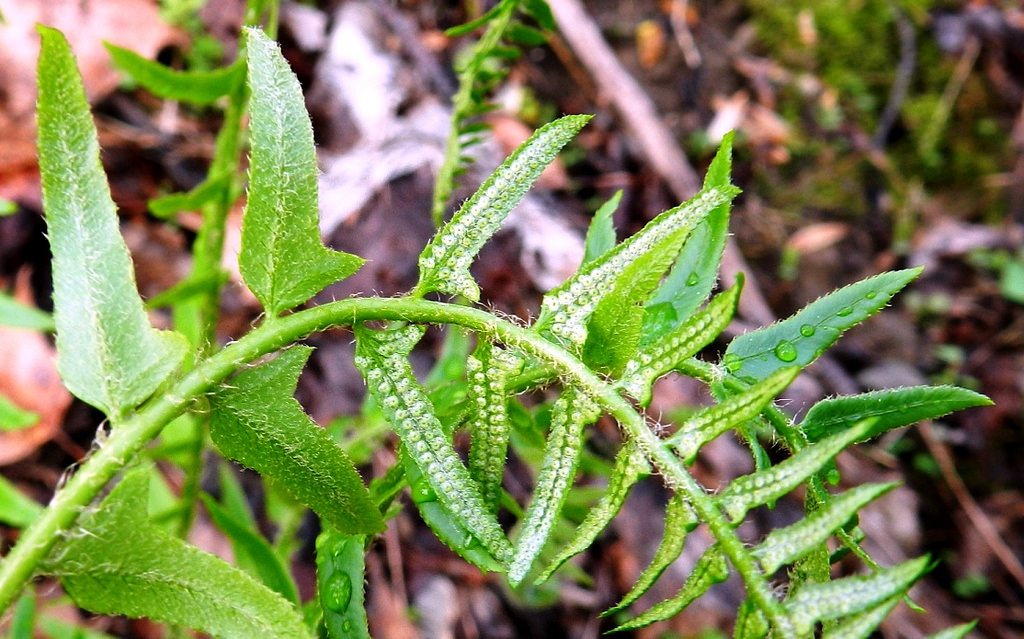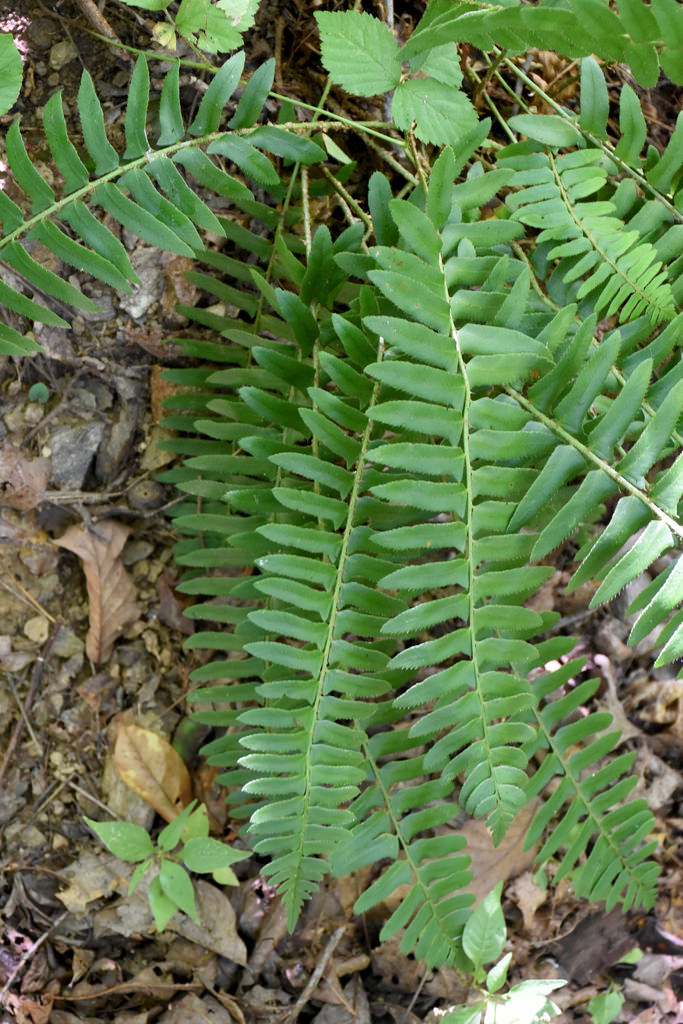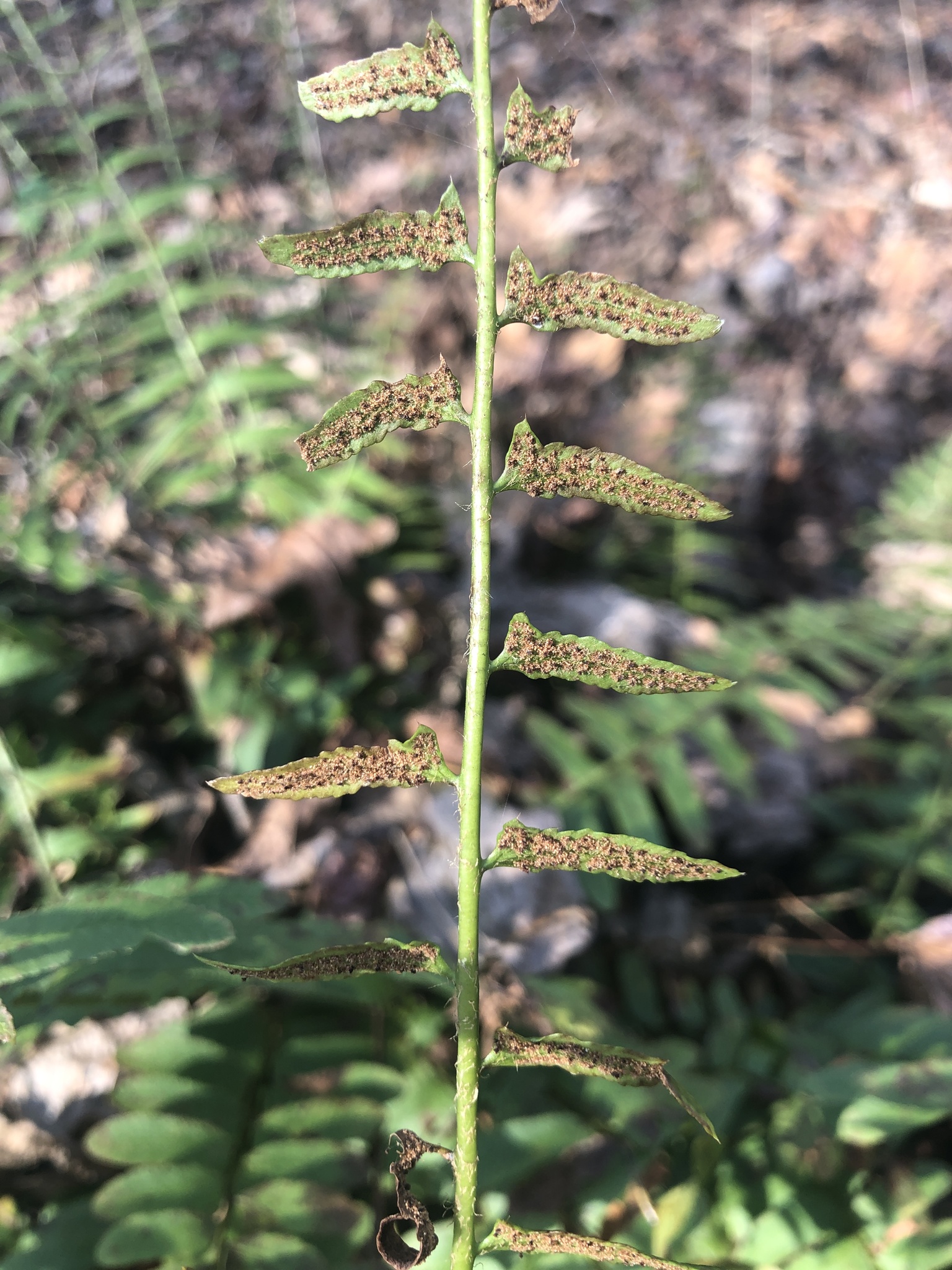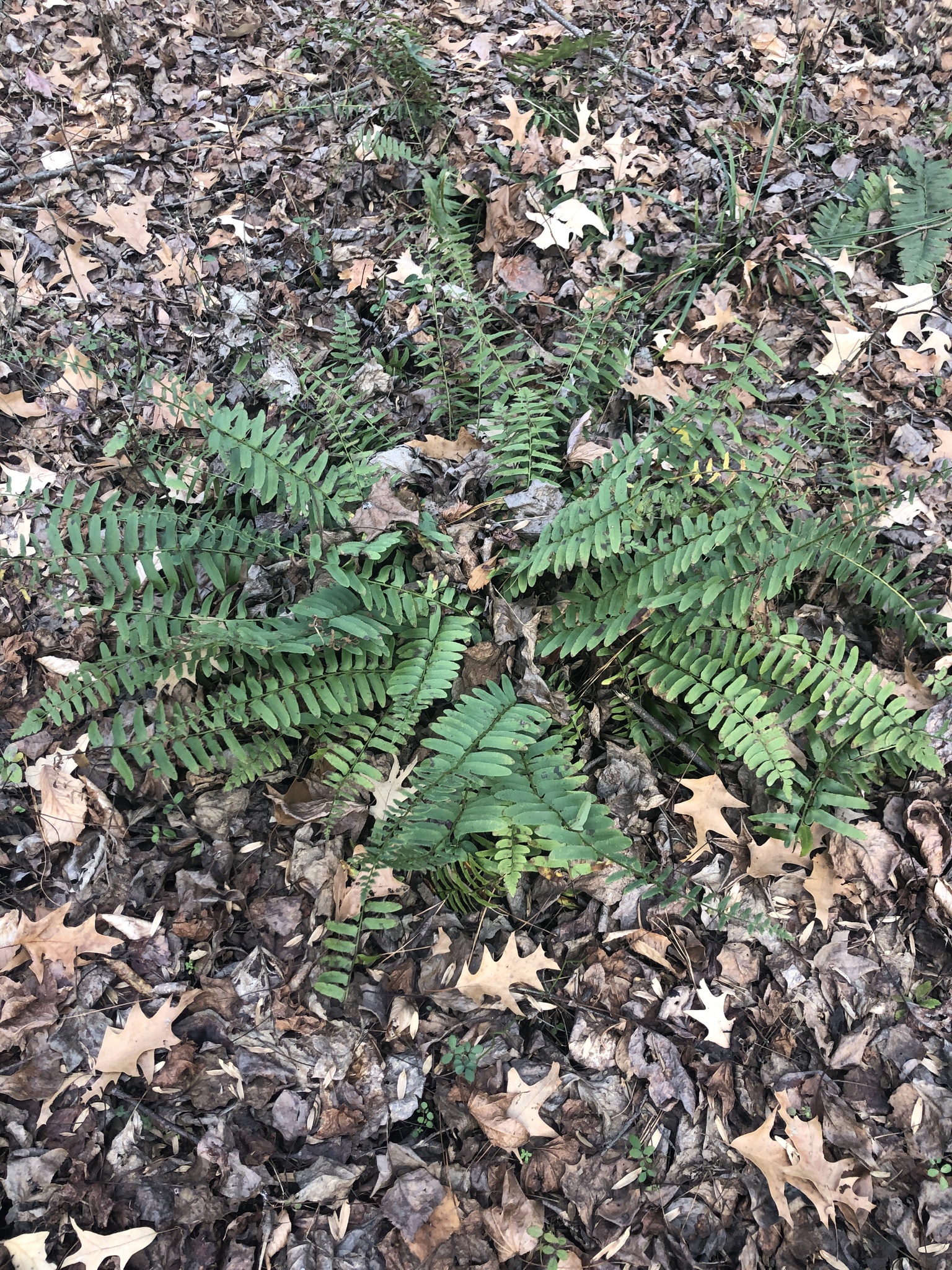


























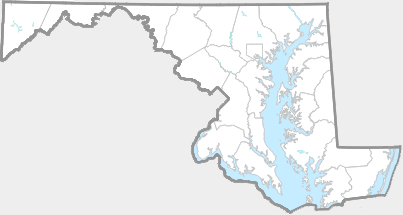
Christmas fern occurs in northeastern and north-central parts of North America from New Brunswick south to North Carolina. It is hardy and abundant and has been documented in every county in Maryland.
“Lustrous, dark green fronds in circular, arching clumps from central rhizome" (Cobb, Farnsworth, and Lowe, 2005). Because Christmas Ferns are evergreen, they are evident all year round, including at Christmas-time, which may be one reason for their name. The margins of each leaflet, or pinna, has narrow fine teeth. A boot-like projection at the pinna base suggests a Christmas stocking, which is a helpful identification feature. Christmas Ferns have both sterile and fertile fronds, the fertile ones bearing markedly shorter, narrower pinnae near their tips. These smaller pinnae, which have tan spore cases (sori) on their undersides, are most noticeable in late summer and fall. Then the spores are shed and the pinnae that bore them dry up, while the rest of the frond remains green. The dry pinnae give the fern a diseased look, but this is the natural condition of the fronds after spore release.
Christmas Fern is especially common on slopes and banks of streams. It is easily observed in winter, when most other green forest-floor plants have died back for the year.
"Growing ferns and the accumulated detritus of past sterile fronds form a dense covering mass over the soil surface. This mass helps to stabilize the underlying soil and prevent or lessen erosion. It also generates a protective, concealing habitat for a number of ground feeding and ground nesting bird species.
"Because of their complex chemical composition, ferns are eaten by very few browsers or grazers. Fern densities in general have been increasing in many of the forests of Pennsylvania [and presumably of Maryland, too], due to the removal of competing, but more palatable, under-story plant species by the extensive browsing by the state's rapidly increasing deer population. This change in the forest under-story habitat structure has had wide-spread and deleterious impacts on the densities and successes of some mid-canopy birds (like the least flycatcher and the yellow billed cuckoo). Other bird species (like the wild turkey, for example) that use the concealing fern masses for their nesting sites have, however, increased in density in these "fern park" forests" (Penn State, Christmas Fern).
There are 1,920 records in the project database.
| GA | AL | WA | FR | CL | MO | HO | BA | BC | HA | CE | PG | AA | CV | CH | SM | KE | QA | CN | TA | DO | WI | SO | WO |
